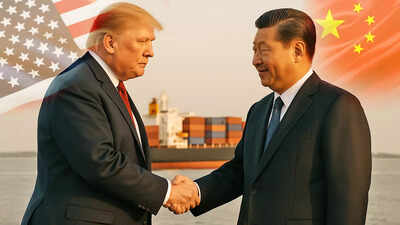In recent years, the escalating US-China trade war has sent shockwaves across the global economy. The imposition of high tariffs on Chinese goods has severely impacted Chinese factories, reshaping the manufacturing landscape and global trade dynamics. This blog examines how US tariffs are affecting Chinese businesses and the broader trade environment.
Introduction: The Impact of US Tariffs on Chinese Factories
On April 2, 2025, the US imposed a staggering 145% tariff on all Chinese goods entering the US. This sudden escalation of tariffs caused immediate disruptions in Chinese manufacturing, with many factories halting production and laying off workers. Chinese business owners, like Derek Wang, whose company produces air fryers for the US market, were forced to rethink their business strategies in the face of rising costs and diminishing demand.

1. Immediate Factory Shutdowns and Job Losses
One of the most visible effects of the US tariffs has been the shutdown of numerous factories, especially those with a heavy reliance on American customers. In cities like Foshan, where high-end appliances are manufactured, businesses have been hit hard. Workers who depended on these factories are now struggling to find new employment as many factories reduce their workforce or halt production entirely.
2. Diversification and Shifting Trade Focus
In response to the tariff hikes, many Chinese manufacturers are looking to diversify away from the US market. Companies are actively seeking new business opportunities in Africa, South America, and Southeast Asia. This strategic shift may reduce China’s reliance on the US, potentially leading to a more diversified global trade network.
3. Economic Uncertainty and Its Impact on Local Communities
The economic uncertainty caused by the tariffs has also affected local communities in manufacturing hubs like Shunde. With many factories closing or downsizing, workers who once enjoyed stable jobs are now facing unemployment. In some cases, they are forced to sleep in parks and take on low-wage, temporary jobs in other sectors.

4. The Role of Trade Ceasefire Agreements
Despite the ongoing tension, recent talks between the US and China have led to a temporary ceasefire in the trade war. A 90-day suspension of some tariffs offers a glimmer of hope for Chinese manufacturers. As factories slowly begin to restart production, businesses are hoping that these talks will pave the way for a long-term resolution.
5. The Global Implications: A Shift in Global Supply Chains
The US-China trade war has had a ripple effect on global supply chains. As manufacturers in China adapt to the tariff changes, many are exploring new markets and adjusting their production lines. This shift could permanently alter the way goods are produced and traded worldwide.
Conclusion: What’s Next for Chinese Factories?
As the US-China trade war continues, the situation remains fluid. Chinese factories are adapting by diversifying their markets and exploring new business strategies. While the latest ceasefire offers a temporary reprieve, the long-term impact of these tariffs will continue to shape global trade. For now, businesses are cautiously optimistic that the two countries will eventually reach a mutually beneficial agreement, easing the strain on the manufacturing sector.
For more updates on global trade and economic shifts, stay tuned to our blog.
Check out US Tariffs on Chinese Goods Explained for an in-depth look at the history and implications of US tariffs.
Learn more about Global Trade Impact on Supply Chains and how businesses are adapting to the current economic climate.









